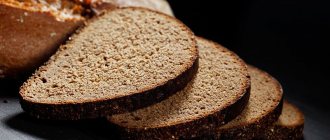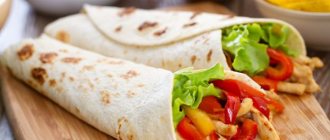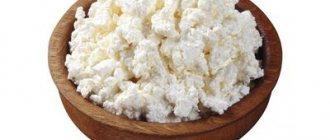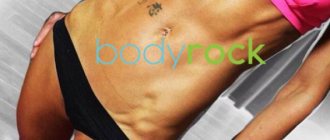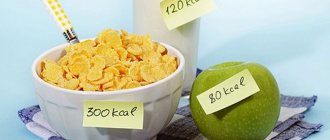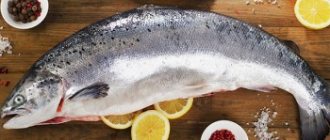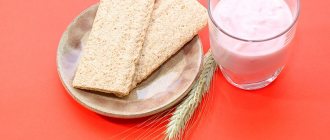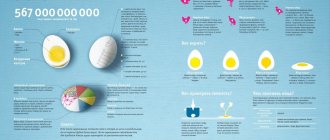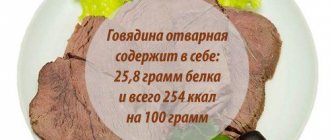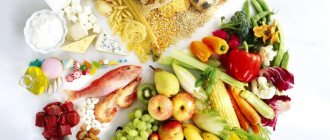For thousands of years, humanity has treated bread as a source of strength, health, and prosperity. But since the beginning of the eighties of the last century, people more often associate problems of overweight or obesity, leading to serious diseases, with the consumption of high-calorie products.
Statistics record sad facts: overweight and obesity have reached global epidemic proportions. Doctors sounded the alarm, and ardent supporters of a healthy diet added all bakery products to the list of “harmful” foods due to their highest calorie content. But the reason for the continuous increase in the number of overweight people does not lie in the calorie content of bread: it is multifaceted.
Don’t rush to exclude baked goods from your diet when thinking about diets. You might as well give up many high-calorie foods! Let's figure it out.
Types of bread: features and calorie composition
To understand how many calories are in bread, to determine for yourself the rate of its consumption, you need to find out what is included in the baked goods, what type of flour was used in it . To a large extent, the change in the calorie content of a product is also influenced by the technology of its preparation .
The table below shows the most common types of baked goods and indicates the calorie content per 100 g of product:
| Type of bread | Calories per 100 g | Proteins fats carbohydrates |
| Rye | 250 | 13/ 3/ 40 |
| Yeast-free | 236 | 7,9/ 1/ 47,6 |
| Whole grain rye flour with malt | 198 | 7,8/ 1/ 39,6 |
| Grey | 227 | 7,5/ 1,3/ 45,2 |
| Darnitsky | 206 | 6,6/ 1,1/ 41 |
| Borodinsky | 208 | 6,9/ 1,3/ 40,9 |
| Molded from rye flour | 217 | 5,9/ 1,1/ 44,5 |
| Wheat-rye (“Ukrainian”) | 198 | 6,6/ 1,2/ 39,6 |
| With bran from wheat flour | 252 | 9,6/ 2,7/ 47,1 |
| Wheat, made from premium flour | 242 | 8,1/ 1/ 48,8 |
| Whole grain (Capital) | 210 | 7/ 1,2/ 45,8 |
Starch is a complex polysaccharide, a carbohydrate, which, when in excess in the body, forms adipose tissue.
The benefits and calorie content of baked goods can only be judged by taking into account the biochemical content of flour. Grain, according to modern standards, is cleaned from the outer shell, which contains the most valuable fiber, rich in vitamins and minerals responsible for a balanced metabolism in the body. The inner part of the grain (kernel) consists of starch and nitrogenous compounds - a soft, mealy core.
Expensive premium wheat flour contains starch and nitrogenous compounds, which make excellent baked goods, but in fact, first grade flour, coarsely ground, containing bran, is of greater value in dietary nutrition than finely ground wheat flour without impurities (bran).
Wheat bread with added bran, containing more calories, is a more valuable and balanced product, since fiber (the hard shell of the grain) regulates the digestion process. The variety of breads containing different ratios of rye, bran and wheat flour also matters when counting calories, as does the type of wheat from which the flour is made.
Perhaps our ancestors did not gain weight because they baked bread from whole grain flour, since they did not know the technologies that brought flour to a refined state.
A complete refusal of the product is unlikely to get rid of extra pounds. Rather, it’s the other way around: a ban causes internal protest, and creating psychological dissonance does not contribute to achieving results—you can’t fool nature.
Understanding the essence of the problem is the beginning of overcoming it. Therefore, we will consider the most compelling reasons leading to excess weight. The truth is in the middle.
Psychological and social aspects
The high calorie content of bread contributes to the accumulation of energy in the body, which, in the absence of physical activity, accumulates under the skin in the form of “strategic reserves” in case of power outages.
This is not a joke, but a law of nature, with which it is useless to argue: instincts, conditioned, unconditioned reflexes exist and continue to work, despite the excessive self-confidence of people who consider themselves its creators.
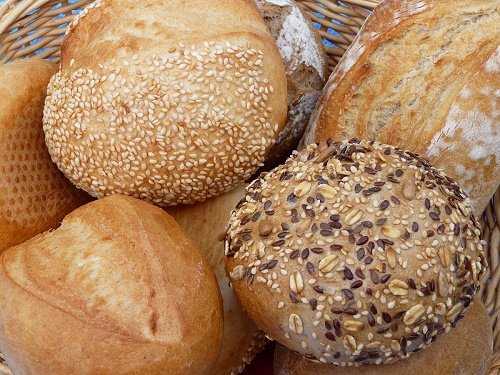
Since the mid-twentieth century, external factors have changed dramatically: in the struggle for survival, man has created a comfortable living environment for himself, and has put technological progress at the service, eliminating the need for hard physical labor for his own survival. But, having obtained the “easy bread”, people did not find the ideal formula for combining molecular technologies with the genetic code given by nature for the survival of humanity as a biological species.
Since people learned to hunt and domesticated animals, meat and butter were available only to the nobility.
Bread remains the most accessible product for all social groups in all countries of the world.
The predominance of flour products in the people's diet has become an acquired instinct, which is triggered even now, in cases of unstable financial situation in an individual family or even on a national scale during periods of economic crisis.
The thousand-year habit of saturating the body with the most high-calorie, available food has been preserved on a subconscious level. Fresh bread crust in combination with your favorite, equally high-calorie delicacies triggers the mechanism of natural instinct, and the sandwich overshadows thoughts about the fight against excess weight.
Remember that food is primarily a source of energy, not pleasure. Energy expenditure should correspond to the total number of calories consumed, including bread.
Bread and exercise
Modern technologies have taught people that there is no need to get food through hard work - just press a few buttons, order a hamburger or pizza directly to the office, without breaking away from monotonous work that does not require physical effort. The same situation is repeated at home, after a working day: snacks in front of the TV screen often also consist of foods high in calories.
You can talk about the “harm of bread” for your figure, look for “unique diets.”
There is no guarantee that “overeating on proteins”, buying more expensive products, will easily cope with excess weight, leading a sedentary lifestyle. We suggest reading an article that contains tips on how to lose weight without dieting.
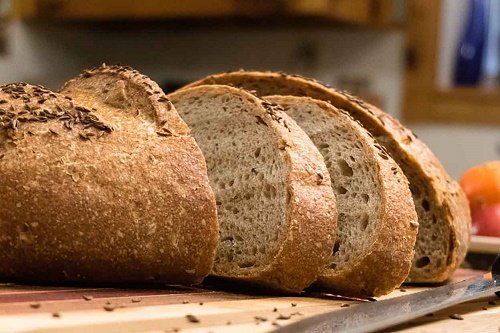
Dieting: how many calories are in black bread?
With a relatively low calorie content in black bread, this product becomes indispensable in any diet menu. How can this be?
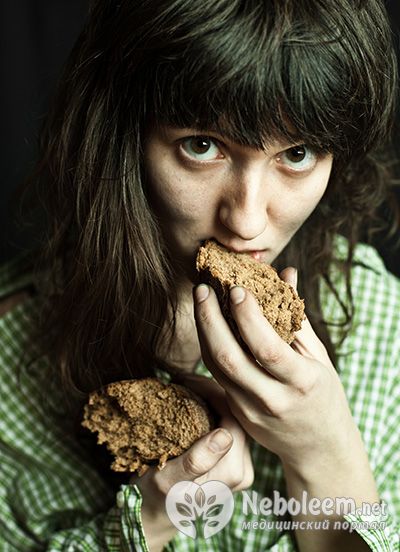
The composition of black bread includes unique enzymes that improve metabolism, promote natural cleansing of the intestines, as well as weight loss. The fiber in its composition helps to satiate the body for a longer period of time, which will eliminate unnecessary snacks from the diet.
Any diet is a kind of stress for the body, which does not receive enough nutrients. A person on a diet is constantly in a state of stress due to dietary restrictions. Vitamins and microelements contained in black bread help reduce stress.
When compiling a diet, many nutritionists do not recommend excluding bread, as it contributes to the normal functioning of the gastrointestinal tract and its regular cleansing. An important point in any dietary nutrition is the exclusion from it not of black bread itself, but of those products with which bread is traditionally consumed: butter, processed cheese, mayonnaise, sauces, ketchups.
Considering how many calories are in rye bread, this product can be safely included in the diet. Borodino bread, whose calorie content reaches 200 calories, is an optimal product for weight loss, stimulating digestion processes and promoting natural weight loss.
Calorie content in a loaf and a piece of bread
Since all types of bread have different composition and weight, it is difficult to give a definite answer about the number of calories contained in one loaf. But determining its calorie content yourself, by arithmetic calculations, is not difficult. To do this, you need to know the type of baked goods and its exact weight, and then use the formula to calculate: from the calorie table, take the number of calories per 100 g and multiply it by the number of grams in the loaf. For example:
- Wheat bread weighing 600 g contains 242 kcal per 100 g, that is, 6 * 242 = 1452 kcal are needed;
- A loaf of Borodinsky weighing 350 g – 728 kcal (3.5 * 208).
So, knowing the calorie content and weight of the loaf, you can find out the weight of one piece and calculate the number of calories in it. On average, a piece of white bread weighs about 25 g, black - 35 g, a loaf - 20 g, and the thickness does not exceed 0.5 cm. To calculate, you need to cut the loaf into approximately equal slices and divide the total weight by the number of resulting pieces, and then calculate calorie content
For example:
- If you cut a 500g loaf of white bread into 18 pieces, each piece will contain approximately 67 kcal ((5*242)/18);
- A slice weighing 35 g, cut from a Borodinsky loaf (350 g), has 72.8 kcal.
How to calculate the calorie content of 1 piece of bread
It is not difficult to calculate how many calories are contained in 1 piece of bread. Pay attention to the thickness of a slice of factory-cut bread. Such a piece will weigh approximately 35 grams. Therefore, to simplify calculations, divide the calorie content per 100 grams by 3.
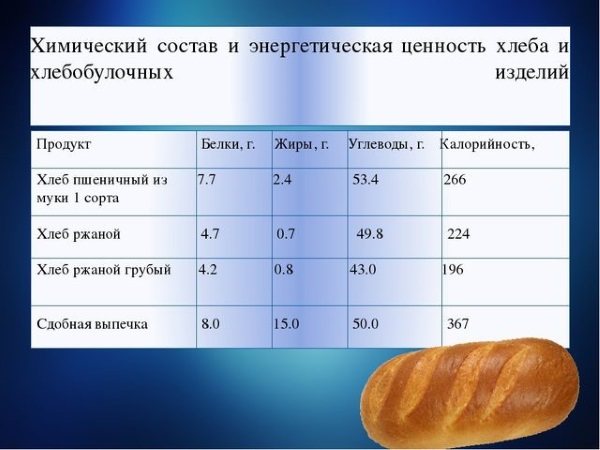
The table shows how many calories are in different types of bread.
Example: bran bread contains 227 kcal per 100 g. This means that 1 piece of such a product will contain 227/3 = 75.7 kcal. A slice of toast bread will contain 96.7 kcal (290/3=96.7). Thus, if you replace toast bread in your diet with yeast-free bread, you can “lighten” your diet by 21 kcal.
It is also easy to calculate how many pieces of bread you can eat per day. The consumption rate of this product for an adult per day is no more than 350 grams. That is, it will be no more than 4.5 pieces of yeast-free bread and no more than 3.5 pieces of toast bread.
Sandwiches: calorie supplements
Sandwiches, hamburgers, hot and cold sandwiches with various toppings are favorite snack options. But when a person goes on a diet, one must categorically refuse “fast food”, given the high calorie content of bread and the no less calorie content of additives. If you like to eat from McDonald's, then we suggest reading about the calorie content of McDonald's products, about safe and unhealthy foods.
On average, one sandwich with additives accounts for 150-400 kcal.
If the daily calorie intake is 2000 kcal (depending on a person’s individual parameters), and for those losing weight this volume is half as much. Tempted by one sandwich with butter, sausage and cheese, the man ate about a quarter of his daily requirement. At the same time, a piece of bread with a few other ingredients is clearly not enough: a snack on the run satisfies the feeling of hunger for only a couple of hours.
This is precisely the root cause of excluding sandwiches from a healthy diet.
Those who cannot imagine a lunch break at work without a couple of sandwiches need to pay attention to supplements with the optimal amount of calories and include them in their diet. Calculation of the calorie content of a product can be carried out according to the same principle as with bread: the total number of calories in the additive is divided by the number of pieces of sausage, butter, cheese, etc.
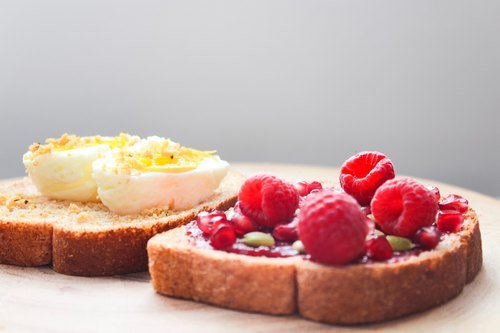
The table below reflects the list of the most common sandwich additives and calorie content per piece:
| Name | Weight | Calories |
| Oil | 4 | 30 |
| Boiled sausage | 36 | 170 |
| Ham | 28 | 84 |
| Salami | 10 | 58 |
| Smoked sausage | 9 | 36 |
| Cheese | 18 | 62 |
| Brynza | 31 | 77 |
| Processed cheese | 18 | 59 |
| Mayonnaise | 5 | 31 |
| Honey | 22 | 84 |
| Fish | 53 | 148 |
| Red caviar | 10 | 102 |
To reduce the number of calories in a sandwich, use bread substitutes and as many fresh vegetables as possible instead of fatty foods.
Very often sandwiches help us out on the road, but this is not the only food that you can take with you. We recommend our article: what to take on the road.
Making croutons from a loaf
Crackers are good when switching to diet food. There are enough calories in crackers - 330 kcal if they are made from white wheat. But, made from rye or a product with bran, crackers are rich in vitamins B, PP, N. They are easily digested and are recommended for people with a sick stomach and those suffering from constipation.
The dish can be prepared from any type yourself. This happens in the following sequence:
- Cut 300 g of the selected product into small cubes.
- Sprinkle them with finely chopped parsley and dill and mix.
- Place everything on a baking sheet and season with salt and pepper.
- Place it in a hot oven at 170 degrees, dry for 15 minutes.
- Stir regularly during drying.
- Immediately sprinkle the finished crackers with water.
- Then return to the oven for 7-8 minutes.
After drying, the crackers are finally ready. They can be used as an additional ingredient in preparing a dish or consumed separately if you want something to snack on.
Products without added yeast are useful for people with intestinal problems. Bread with a dense and hard structure has a positive effect on the gastrointestinal tract. Among the negative aspects, one can highlight the unusual taste, lack of fluffiness and aroma of yeast. But the baked goods are just as delicious as the wheat ones.
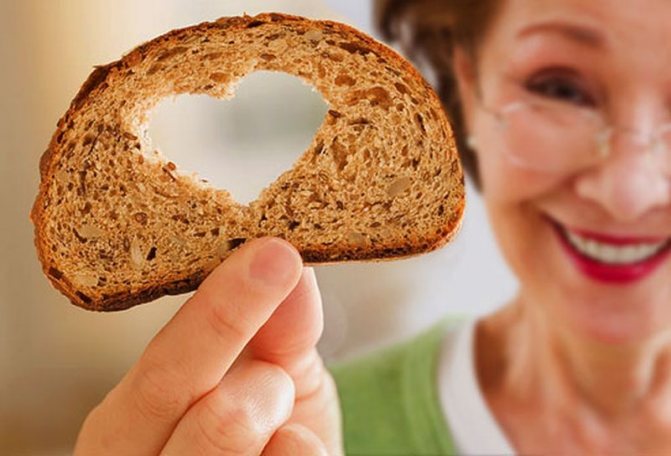
The following ingredients are required for preparation:
- glass of water;
- 2 cups of any flour - it is better to mix wheat with rye;
- Salt and sugar to taste.
The cooking sequence is as follows:
- It all starts with preparing the starter: mix 40 g of flour and a quarter glass of boiled water, close the container with a lid and put it in a warm place for a day.
- When the time is up, mix another 50 grams of flour into the starter and place it in a warm place again.
- Make a dough from the remaining flour and warm water, add salt and sugar. Mix well so that there are no lumps.
- Let the dough sit for 2-3 hours, it should rest.
- Place the dough in a greased pan and bake in the oven until done.
For people who are on a diet and trying to lose weight, it is important to know how many calories are in a piece of bread so as not to eat too much. You can’t overeat not only bread products, but also all other products. Bakery products are healthy and carry many useful and necessary elements into the body.
Croutons can be cooked in the oven without oil. To reduce calorie content, it is better to take products made from wholemeal flour so that the crackers are better absorbed by the body.
To prepare, you need to do the following:
- Cut a small amount of product into cubes.
- Mix them with finely chopped herbs - it is better to take dill and parsley.
- Place the product on a baking sheet - you can dry it, you can pre-grease it with oil. In the second case, the nutritional value of the cooked croutons will increase.
- Sprinkle the chopped loaf with spices and salt.
- Place the baking sheet in the oven at 170 degrees for 15 minutes.
- To prevent the loaf or wholemeal product from burning, turn it over periodically.
- Next, remove the crackers from the oven and sprinkle them with water.
- Place the loaf in the oven again for 5-7 minutes.
- Remove the product from the oven and leave it to cool.
Such crackers contain no more than 330 kcal per 100 g. They are recommended to be added to soups and other dishes.
Calorie content of crackers and fried bread
Rusks are very often used as an addition to hot liquid dishes and salads. Recommendations for their inclusion in a healthy diet are associated with the content of a large amount of nutrients and vitamins (magnesium, phosphorus, iron, potassium, sodium, etc.), as well as a low level of gluten, which helps normalize the functions of the digestive tract.
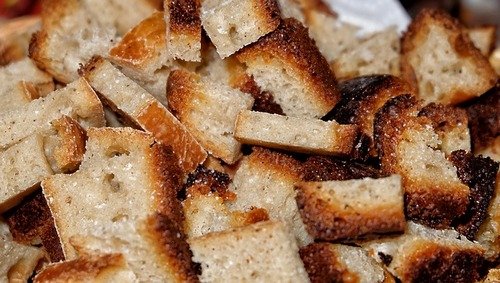
Since drying occurs without any additives, the calorie content of crackers is practically no different from the calorie content of the bread from which they are made.
Per 100 g of product of different varieties there are:
- 331 kcal – loaf;
- 210 kcal – black bread;
- 395 kcal – breadcrumbs;
- 180 kcal – rye bread;
- 410 kcal – crackers with raisins;
- 230 kcal – gray bread.
Croutons, like biscuits with bread, are a good base for snacks and sandwiches. Fried crispy bread supplies the body with a lot of carbohydrates, zinc, phosphorus, copper, potassium, calcium, vitamins PP and B, as well as saturated and polyunsaturated acids. The calorie content of croutons directly depends on the type of bread and the additive on which it is fried. When using 3 g of butter (23 kcal) and a piece of black bread (73 kcal), the snack will add 96 kcal. On average, 100 g of croutons can contain up to 407 kcal.
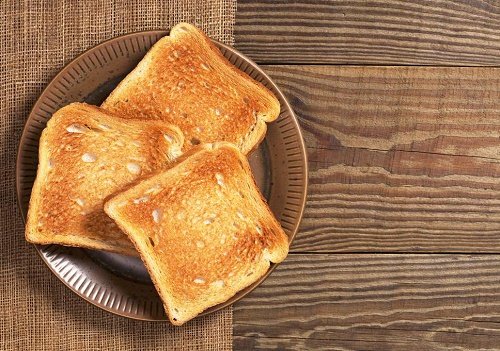
Features of making rye bread
Rye flour differs from wheat flour in a number of baking properties. It completely lacks gluten and significantly more alpha-amylase than wheat, which converts starch into dextrin, thereby deteriorating the quality of bread. Due to the large amount of water-soluble substances, liquid accumulates in the dough, it does not hold its shape and “floats”. All this does not allow the use of the same preparation methods as for wheat dough.
Our ancestors found a solution by using instead of yeast (or together with them) starters with high acidity, which is provided by lactic acid bacteria. They are the causative agents of fermentation, which contributes to the loosening of the dough. The quality of the product, its taste and aroma directly depend on the amount of lactic acid produced by the microflora. In sourdough and dough, there should be 60-80 times more acid-forming bacteria than yeast cells.
Yeast enters the starter either naturally - from the surrounding air, flour or water (wild yeast), or is specially introduced in limited quantities (starter yeast). Sourdough can be liquid, thick (with or without brewing) or concentrated lactic acid, and is a well-fermented dough. Previously, the sourdough recipe was kept secret and passed down by bakers from generation to generation.
Making rye bread takes longer than wheat bread, although the technological chain is shorter. The fermentation process occurs during proofing and can last from two to four hours. The readiness of the dough is determined by a significant increase in volume, degree of porosity and elasticity.
Apples for a beautiful figure
Benefits and harms
The benefits and harms of bread are determined by several criteria:
- the type of flour used;
- additives that increase shelf life and improve appearance;
- the caloric content and energy value of the product is determined by the technological process, starting with the preparation of products and ending with the packaging of finished loaves;
- compliance with consumption standards, nutritional culture;
- characteristics of the body.
Many experts agree that the leaders in the list of flour products of dietary value are products made from wholemeal rye flour and whole wheat flour, as well as bran and whole grain bread. According to research, these varieties have the maximum amount of essential microelements. Why? The process of processing raw materials for the production of flour involves preserving in the final product the proportion of sprouted grains that have the greatest benefit.
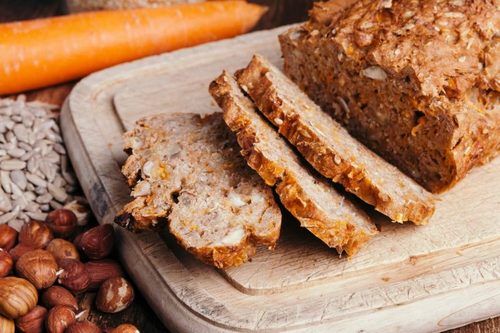
Photo: 8fit.com
Wheat bread, which for centuries was considered a privileged food, today is considered a “harmful” product. Dietary baked goods now include products with a 20% grain husk content. Bread made from wholemeal wheat flour with bran quickly and for a long time saturates the body and normalizes intestinal function. Since it contains “slow carbohydrates”, which are absorbed by the body gradually, without being stored in reserve in the form of fatty tissue.
It is also not recommended to overuse yeast. They destroy the beneficial substances in the product and cause dysbacteriosis by reacting with flour carbohydrates even at the dough kneading stage.
When choosing dietary bread, pay more attention to yeast-free dough (lavash, unleavened flatbread) or to products prepared with sourdough.
We invite you to watch a video on the topic of yeast and “yeast-free bread” from the “Live Healthy” program.
Try to carefully study the composition of the product indicated on the label. Some types of baked goods contain margarine, which supplies the body with large amounts of harmful trans fats and chemical additives. Such baking causes an imbalance in the digestion process.
We invite you to watch a video from the Live Healthy program about margarine and butter.
To better manage your calorie content, bake your bread at home.
The table below will help you understand which bread contains more nutrients and what its energy value is:
| Rye | White | Black |
| Squirrels | ||
| 8.5 g | 7.6 g | 1.72 g |
| Fats | ||
| 3.3 g | 3.2 g | 0.31 g |
| Carbohydrates | ||
| 48.3 g | 50.8 g | 11.29 g |
| Cellulose | ||
| 5.8 g | 2.4 g | 2.8 g |
| Calcium | ||
| 24 mg | 33 mg | 35 mg |
| Potassium | ||
| 166 mg | 100 mg | 74 mg |
| Sodium | ||
| 660 mg | 681 mg | 49 mg |
By the way, if you want to know which bread is better, white or black, we suggest watching a video on this topic.
The benefits of bread product
Having considered the energy value of various types of baked goods, it is necessary to present its benefits so that readers can decide whether to consume it daily. The benefits of the product are indicated by the composition presented in the table.
| VITAMINS | CONTENTS, MG | MINERALS | CONTENTS, MG |
| Kholin | 60 | Chlorine | 680 |
| Vitamin E | 2,3 | Sodium | 400 |
| Vitamin B3 | 2 | Potassium | 244 |
| Vitamin B5 | 0,55 | Phosphorus | 194 |
| Vitamin B6 | 0,2 | Magnesium | 57 |
| Vitamin B2 | 0,09 | Sulfur | 56 |
| Vitamin B9 | 0,03 | Calcium | 33 |
| Vitamin B1 | 0,02 | Silicon | 5,5 |
| Vitamin A | 0,003 | Iron | 4,5 |
| Vitamin H | 0,002 | Zinc | 1 |
The benefits of bread lie in the content of healthy amino acids, complex carbohydrates and fiber. The substances presented can normalize intestinal function and reduce cholesterol levels in human blood.
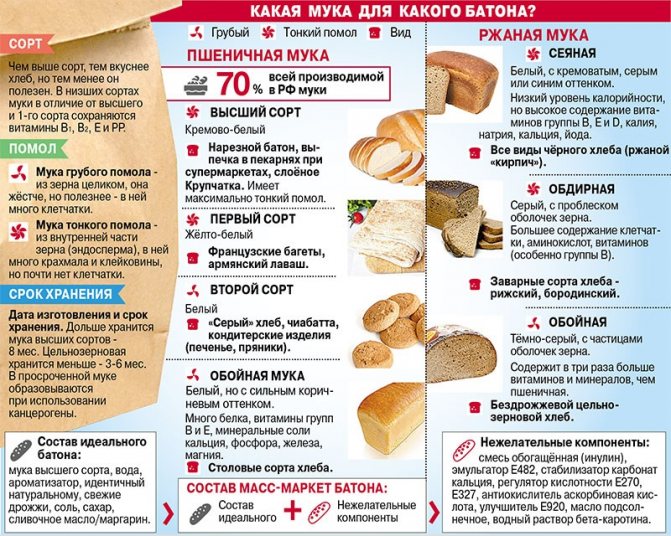
But the consumption of baked goods should be in moderation, because otherwise you may encounter increased intestinal gas formation. This in most cases occurs when consuming large quantities of wheat or products with bran.
| Name | Calorie content per 100 g |
| Wheat flour loaf | 235 kcal |
| Pancake flour (pancake flour) | 333 kcal |
| Pancake with cottage cheese | 162 kcal |
| Pancake with mushrooms | 200 kcal |
| Pancake with meat | 186 kcal |
| Pancake with chicken and rice | 169 kcal |
| Butter bun | 300 kcal |
| Hot dog bun | 266 kcal |
| Burekasi with cabbage | 393 kcal |
| Burekas with liver | 404 kcal |
| Burekas with jam | 412 kcal |
| Burekas with meat | 373 kcal |
| Burekasi with onion and egg | 354 kcal |
| Croissant with caramel | 298 kcal |
| Croissant with cabbage | 377 kcal |
| Coffee croissant | 346 kcal |
| Wheat flour | 334 kcal |
| Rye bran | 212 kcal |
| Wheat bran | 260 kcal |
| Blueberry pie (pie with blueberries) | 196 kcal |
| Strawberry pie (pie with strawberries) | 221 kcal |
| Pie with lingonberries | 242 kcal |
| Fried pie with liver | 336 kcal |
| Pie fried with onion and egg | 248 kcal |
| Pie with cabbage | 246 kcal |
| Pie with fish | 227 kcal |
| Pie in Ural style | 178 kcal |
| Drying | 341 kcal |
| Cream crackers | 398 kcal |
| Rye crackers (Finnish) | 320 kcal |
| Wheat-oat crackers (well done bread) | 295 kcal |
| Wheat-buckwheat crackers (well done bread) | 280 kcal |
| Puff pastry without yeast | 487 kcal |
| Crackers with cranberries (Doctor Korner) | 330 kcal |
| Cereal crackers (Doctor Korner) | 312 kcal |
| Black bread | 214 kcal |
| White wheat bread | 223 kcal |
| Borodino bread | 208 kcal |
| Chusovsky dark bread | 212 kcal |
| Malt bread | 281 kcal |
| Kaiser bread | 271 kcal |
| Corn bread with seeds | 290 kcal |
| Rye bread made from peeled flour | 189 kcal |
| Rye bread made from wallpaper flour | 181 kcal |
Eating bread on a diet
Bread also contains other useful substances, the presence of which directly depends on the type of product.
The common belief that bread is a “forbidden fruit” on a diet is wrong. If you want to lose weight, be careful when consuming baked goods. To consolidate your results, follow these rules:
- Limit consumption to 50 g (2 pieces) per day.
- Avoid sandwiches with high-calorie additives containing large amounts of fast carbohydrates; do not eat bread with potatoes, rice, pasta, cereals, butter or vegetable oil.
- Give preference to healthy flour products.
- You can eat bread during the day, during meals or separately, but not after 8 pm or 4 hours before bedtime.
- Do not eat hot baked goods, as they contain high gluten content, which makes it difficult to digest food.
We recommend reading the following articles: Balanced nutrition Protein-carbohydrate alternation (BCA) Benefits and harms of apples Calorie content of eggs Benefits and harms of banana Calorie content of rice
Let us separately clarify what kind of bread you should eat in order not to gain weight. Dietary flour products include products containing a low glycemic index, which determines the effect of food on blood sugar levels. Thus, sweet additives and raising agents in combination with premium wheat flour significantly increase the glycemic index, so those losing weight should avoid products that contain these ingredients.
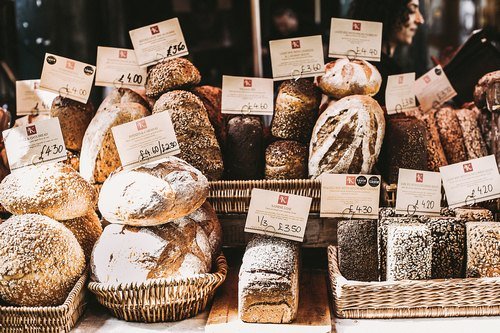
It is recommended to include the following types of bread in your diet:
- Bran. Causes rapid saturation due to the swelling of bran in the stomach, removes waste and toxins from the body. It has a low glycemic index and a high content of vitamins and minerals.
- Wholegrain . Baked goods made from wholemeal white flour extracted from sprouted grains retain vitamins after processing and contain complex carbohydrates that promote satiety. Reduces cholesterol levels.
- Rye. Contains a lot of magnesium, phosphorus, iron and vitamins. Thanks to the large amount of fiber, it normalizes the functioning of the gastrointestinal tract and improves food absorption.
- Wheat grain. The presence of coarse fibers normalizes intestinal function. But the higher carbohydrate content in wheat grains results in a high calorie content of the product.
- Alive. Its benefit lies in the need for a large amount of energy during digestion. The composition includes essential amino acids and microelements.
- Biobread. Preparation involves the use of several types of wholemeal flour and natural sourdough without the addition of raising agents, flavorings, preservatives and flavor enhancers.
- Salt-free or achloride bread. The dough is prepared using whey.
- Buckwheat. A low-calorie and high-carbohydrate product, it is rich in vitamins and minerals that remain in the buckwheat bread.
From this video from the program “Live Healthy!” find out whether or not you can eat bread. The special guest of the program is nutritionist, nutrition specialist, researcher, author of the “bread diet” and the nutritional bestseller “Eat Bread and Lose Weight,” Olga Raz.
What kind of bread can be used on a diet?
In the fight against excess weight, you need to give preference to bran bread and yeast-free bread. Bread with bran will cleanse the intestines well and normalize its functioning. Due to this, the weight loss effect quickly becomes visible. However, it is not recommended to eat this bread too often. Otherwise, you may have stomach problems.
Yeast-free bread is also a good alternative to loaf and even rye bread. In baked goods, yeast is the most unhealthy ingredient. They negatively affect the digestive system and also create an acidic environment in the body, which helps the development of infections and bacteria. Therefore, yeast-free bread is not only low-calorie, but also healthier.
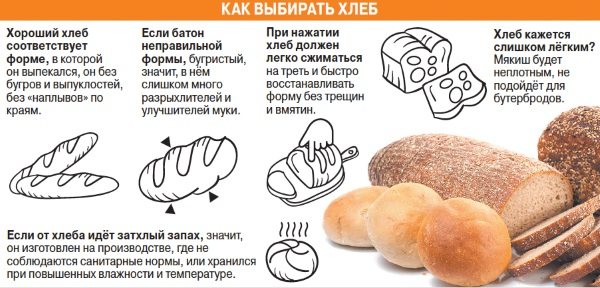
If you still want to eat white bread, then you need to dry it in a toaster or let it get a little stale in natural conditions. The most harmful and high-calorie bread is freshly baked bread.
Alternative to bread for losing weight
Bread is popular among people trying to lose weight. They contain iron, calcium, protein and fiber, which are beneficial for the body. Thus, 100-150 g of bread contains the daily intake of fiber, which accelerates the elimination of toxins and waste. But breads have different compositions, and some of them are high in calories and do not contribute to weight loss. Products suitable for diet are prepared by extrusion from peeled or whole grain flour without the use of yeast. Some breads add flax or sesame seeds, which are also good for the body.
Let's compare several popular types:
| Name | Number of kcal. per 100 g | Compound |
| Rye | 360 | wheat bran, margarine, rye flour, yeast, salt. |
| Wheat | 240 | sprouted wheat grains, additives: raisins or dried apricots. Rich in magnesium and potassium. |
| Multigrain | 290 | buckwheat, rice, corn, oatmeal, wheat. |
| Wheat-rye | 310 | wheat and rye flour, water, seeds. They contain a lot of sodium, magnesium, phosphorus, iron, calcium, fiber, vitamins PP, B, E. |
| Wheat-oat | 302 | oatmeal, winter wheat, table salt |
Thus, preference should be given to wheat and multigrain breads that do not contain harmful synthetic additives.
Other common bread substitutes are biscuits, which contain about 300 kcal. per 100 g and pita bread – 110 kcal. per 100 g. Their benefits are due to the fact that only water, flour and salt are used for cooking. The absence of yeast and any leavening agents has a beneficial effect on the figure.
We invite you to use our calculators to properly monitor your health and appearance.
However, pita breads are made only from wheat flour, which should be limited on the diet, so biscuits are considered the best option. They are easy to prepare from any type of flour (barley, pea, bean, etc.). Baking made from unleavened dough can be stored for a long time, making it possible not to worry about the freshness of the bread.
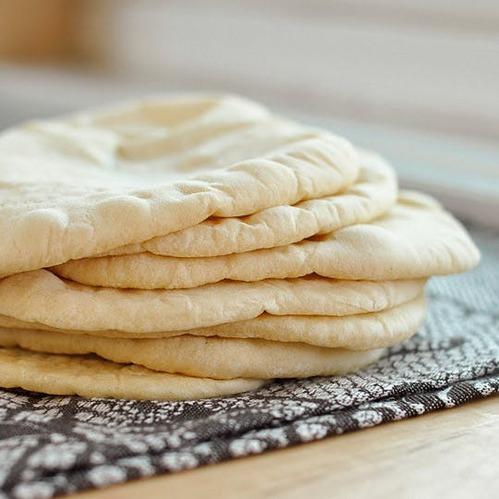
Photo: dir.indiamart.com
It is also recommended to replace your favorite sandwich bread with lettuce and diet bread.
If you have certain diseases and are worried about whether you can eat bread if you have certain diseases, then watch the Health TV program, where this topic is discussed in detail.
Is it possible to have bread on a diet?
Many diets include bread in the menu. This is due to the fact that along with this product a person also receives important microelements. Of course, in none of the diets will you find a mention of the fact that you need to eat a loaf of bread a day. But a piece of rye or bran product along with healthy fatty fish, herbs, and low-calorie cottage cheese is a good component of a complete diet.
Also, when dieting, it is recommended to eat some bread as a snack along with a salad of fresh vegetables and herbs. Bran bread is also good in combination with fermented milk products. This type of food will relieve the feeling of hunger.
How to use it correctly
In order for baked goods to bring only benefits, you need to correctly include them in the diet:
- It is strictly forbidden to consume the product fresh from the oven - hot. It contains a lot of gluten, which makes it difficult for the digestive system to digest. This can cause attacks of gastritis, constipation and general indigestion.
- The products should not be consumed together with potato dishes. Large amounts of starch and carbohydrates will greatly increase your blood sugar levels.
- Meat, fish, butter and cottage cheese must be combined with low-calorie varieties of baked goods.
- Mold slices should not be consumed. Toxins that enter the body can disrupt many normal life processes.
- During a diet for weight loss, you need to limit your consumption. It will be enough to eat 50 grams per day. Give preference to rye or whole grain varieties. It is better to switch to black bread crackers.
During the diet period, it is better to eat the allowed piece for breakfast with tea or for lunch with soup. After 16:00 you need to refuse completely. In the morning, all the excess received is quickly burned, and a slice eaten in the evening will easily be deposited on the sides in the form of fat deposits.
